
おはようございます。
Good morning.
いつもご覧いただいてありがとうございます。
Thank you for reading this Blog.
今日は、イチョウについて。
Today’s topic is Ginko tree.
イチョウは、東京の木です。
This tree is Tokyo tree now.
都営の電車やバスのマークはイチョウの葉が使われています。
So, the leaf figure became the mark of Toei line and Toei bus.
Toei means run by Tokyo metropolitan government.
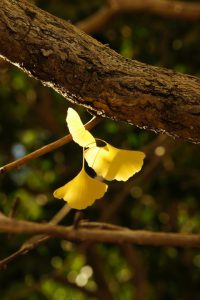
そんなイチョウ、
水をたくさん含んでいて、
燃えにくいという特徴があります。
Ginkgo tree has a good charctor.
This include a lot of water, that’s why it is hard to be burned.
戦前の東京は、木造家屋が密集していました。
Before WWⅡ, there are a lot of wood houses in Tokyo.
だから、燃えやすかった。
That’s why Tokyo was very week against fire.
関東大震災でも、
第二次世界大戦中でも、
大火事があった。
In that situation of the big earthquake in 1923 and the air raid of WWⅡ in 1945,
there were big fire.
そんな場所にあって、
イチョウは、水分が多いから、
燃えきらずに生き残っていたりするんです。
Some ginkgo trees survived,
because they included a lot of water.
その一つが、
麻布の善光寺にあるイチョウ。
One of them exist in Zenko-temple in Azabu, Minato-ku, Tokyo.
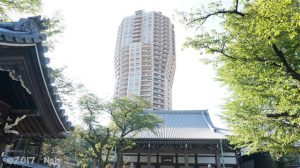
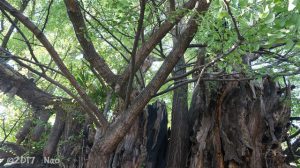
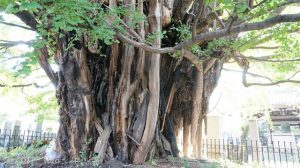
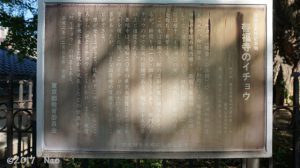
樹齢700年くらい。
おそらく、中国から渡ってきた最初の頃のもの。
The age of it is about 700.
I think one of first tree which came from China.
幹には空襲で焼けた跡がありますが、
その後、新芽が脇から出て、大木の姿を保っています。
It’s trunk had burned, but from trunk new branch grew up, and keep it’s big figure.

現在は、街路樹として、あちこちで東京を飾っているイチョウ。
これから、秋になると、
黄葉して金色に光り輝く。
You can see a lot of ginkgo trees in Tokyo as street tees.
In Autumn, it become yellow, I think golden.
また、イチョウが美しい季節が、もうすぐやってきます。
Soon, the beautiful season which has golden ginkgo trees will come in Japan.
最後までご覧いただき、ありがとうございました。
Thank you for reading.


